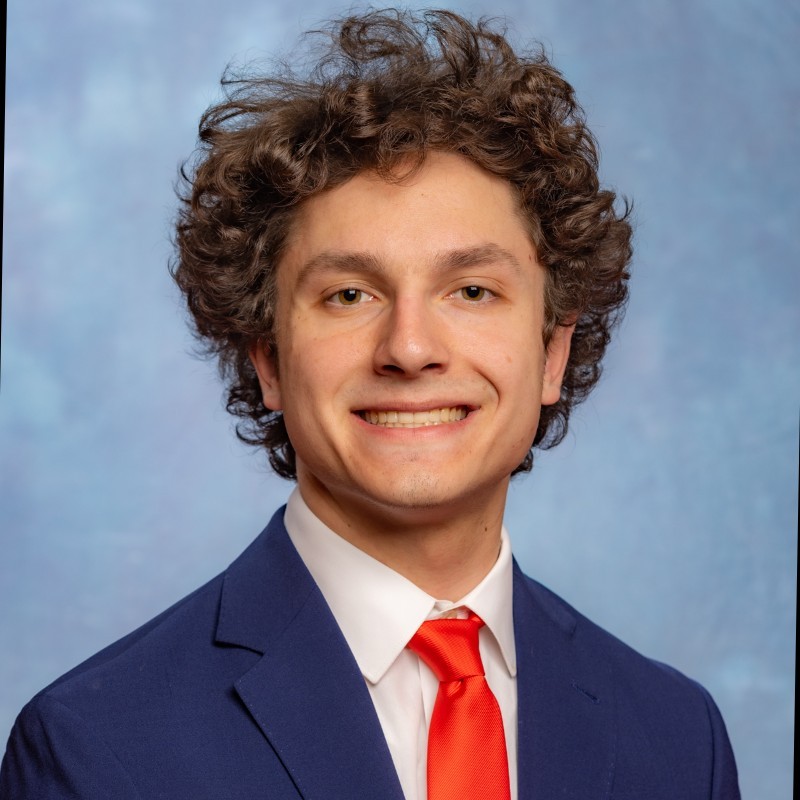Creating an effective essay outline is fundamental to the writing process. An appropriately crafted outline can help you create a coherent, well-planned essay. Whether you build your structure for the essay or you use a template, this first step is the key to excellent writing.
In this article, you’ll learn what an outline is and how to make the most of it.
What is an Essay Outline?
It is the skeleton of your final paper. It should contain all the main ideas and concepts included and demonstrate them. A proper outline will easily convey the main argument and have a coherent flow connecting ideas.
You’ll often be asked to submit an outline before starting, but even if not, it’s essential to the writing process as it will keep your thoughts organized and your essay clear.
Why is It Important?
While it’s entirely possible to write your essay without an outline, it won’t be nearly as structured and coherent without one. Highly effective writing takes considerable planning. After doing all the research required, you should find the best way to connect all this information to be clear and readable.
An outline will also help keep you organized as you’re writing, making the process easier for you. You won’t need to worry about what comes next as you write. It already has the main ideas organized for you, so all you need to do is put those arguments into words.
Finally, an outline can be helpful to make sure that you don’t miss any key arguments. It’s easy to get caught up in typing your essay as quickly as possible, so you’ll be guaranteed not to skip anything important by having an outline.
Outline Templates
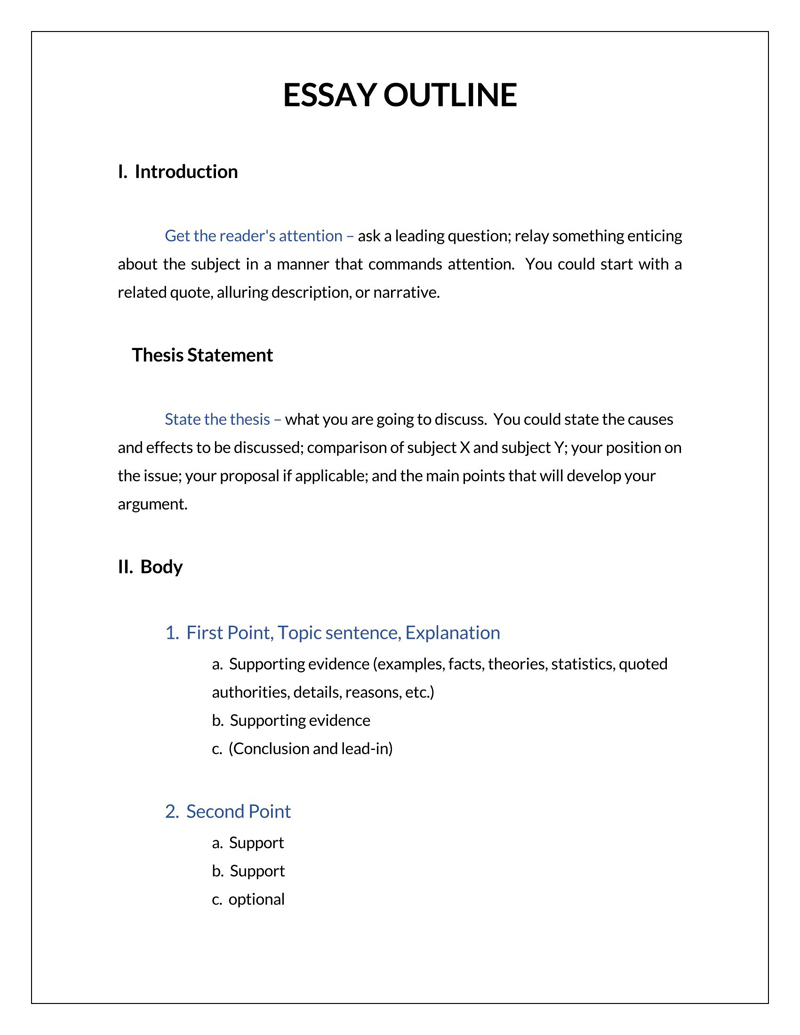
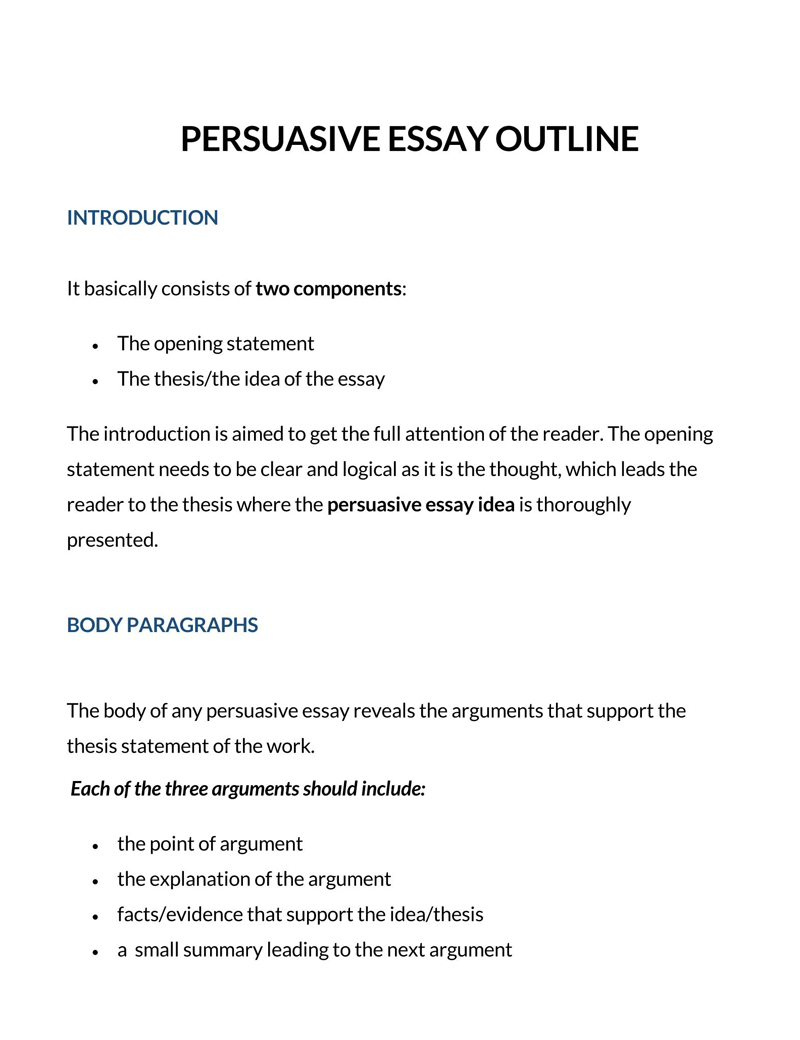
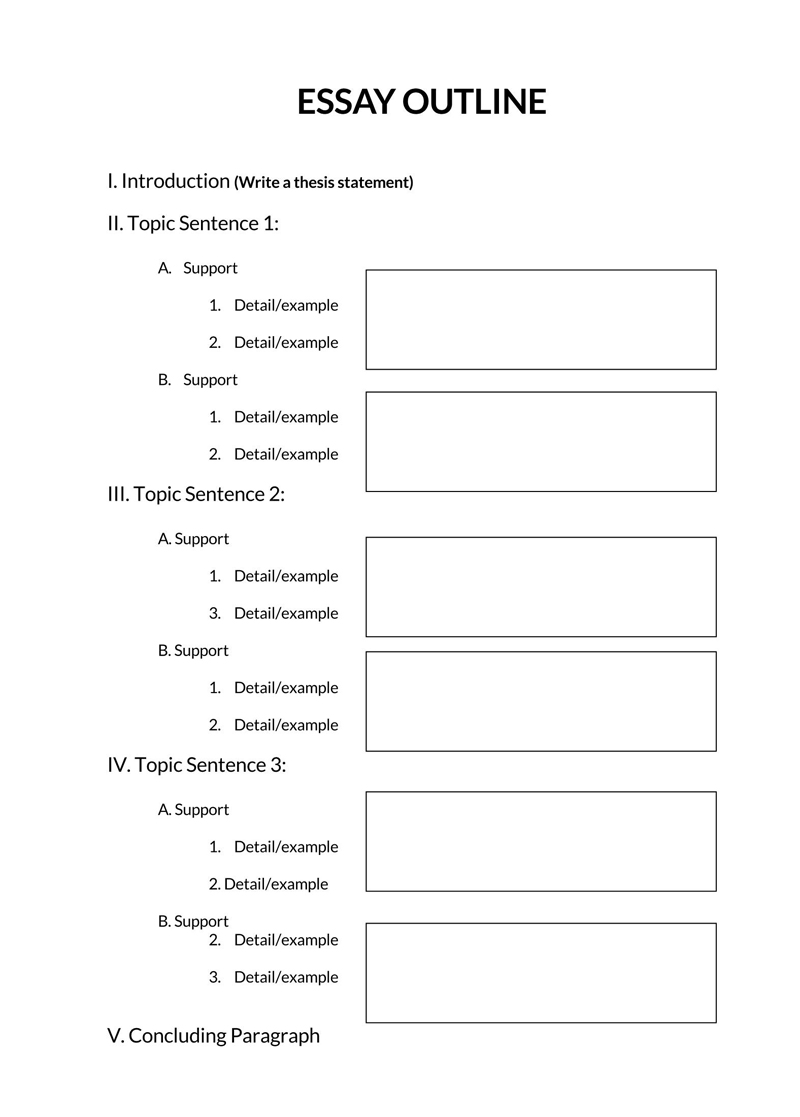
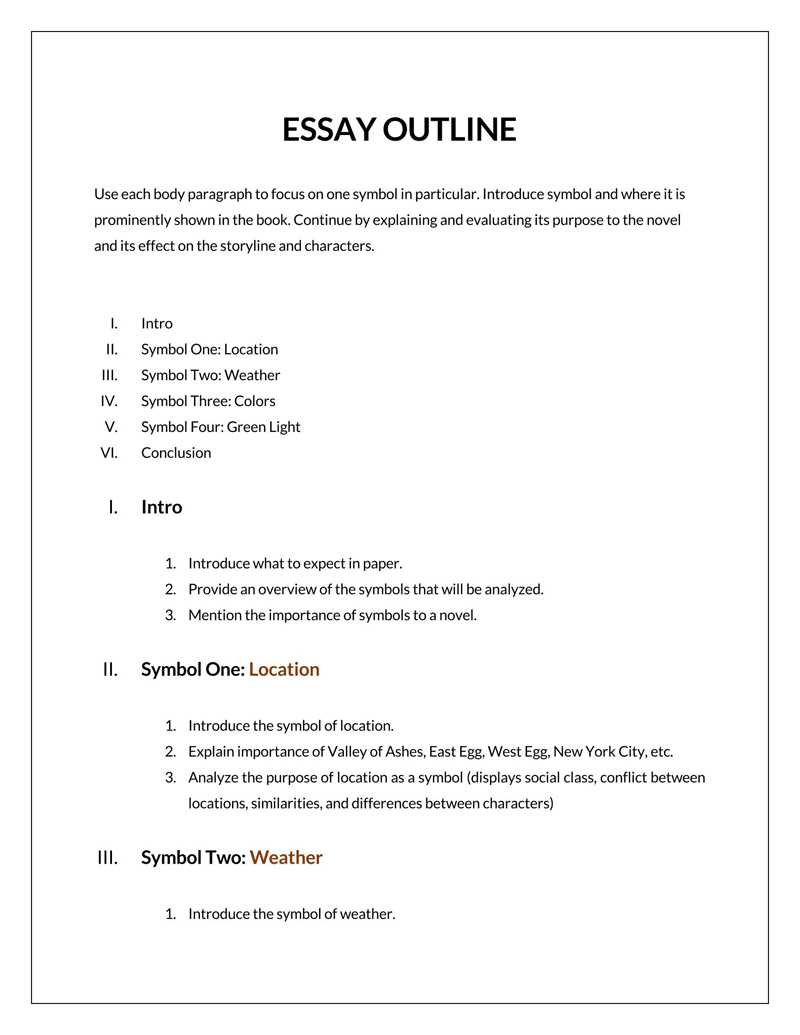
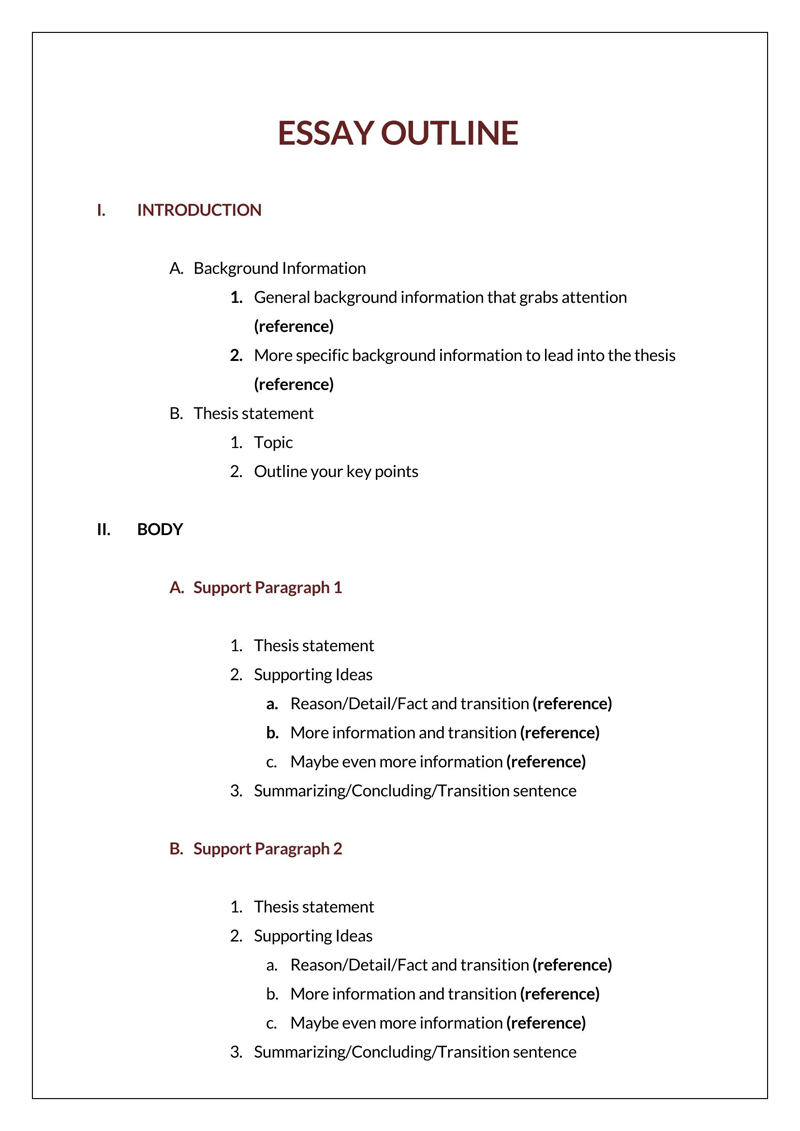
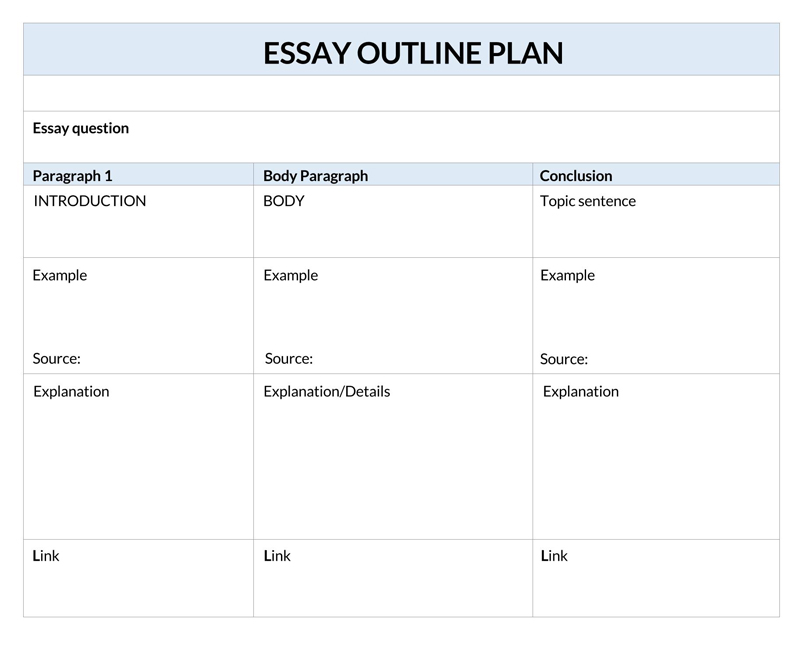
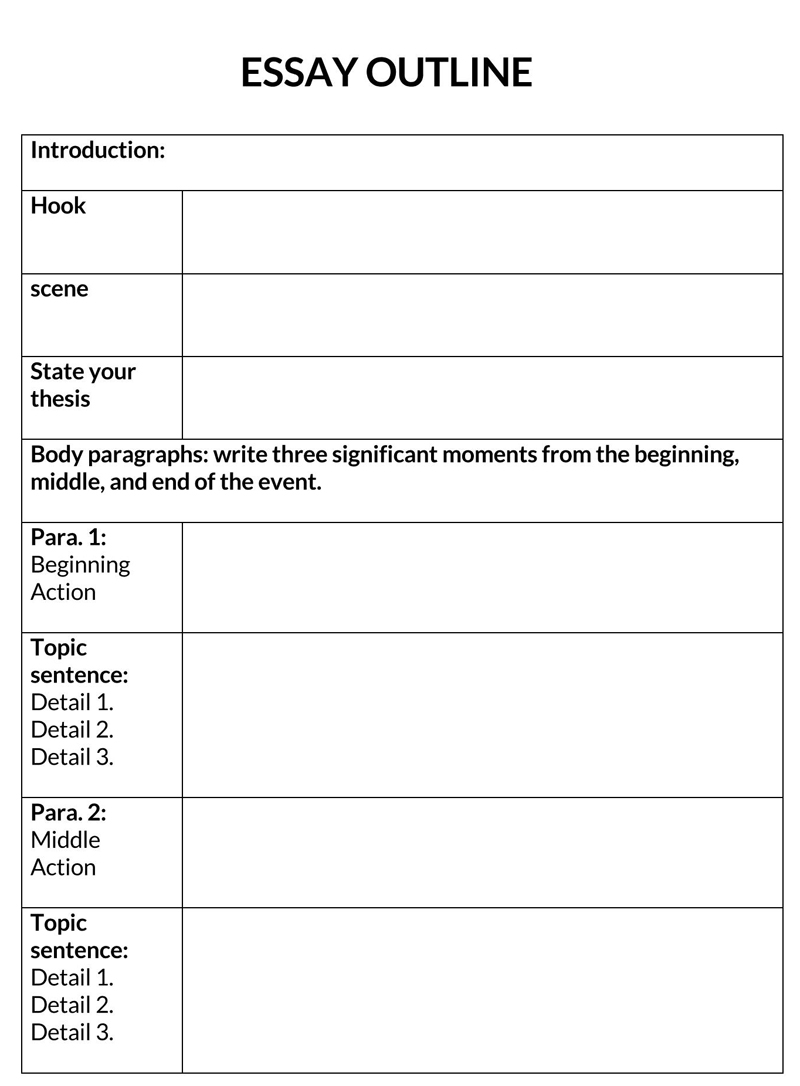
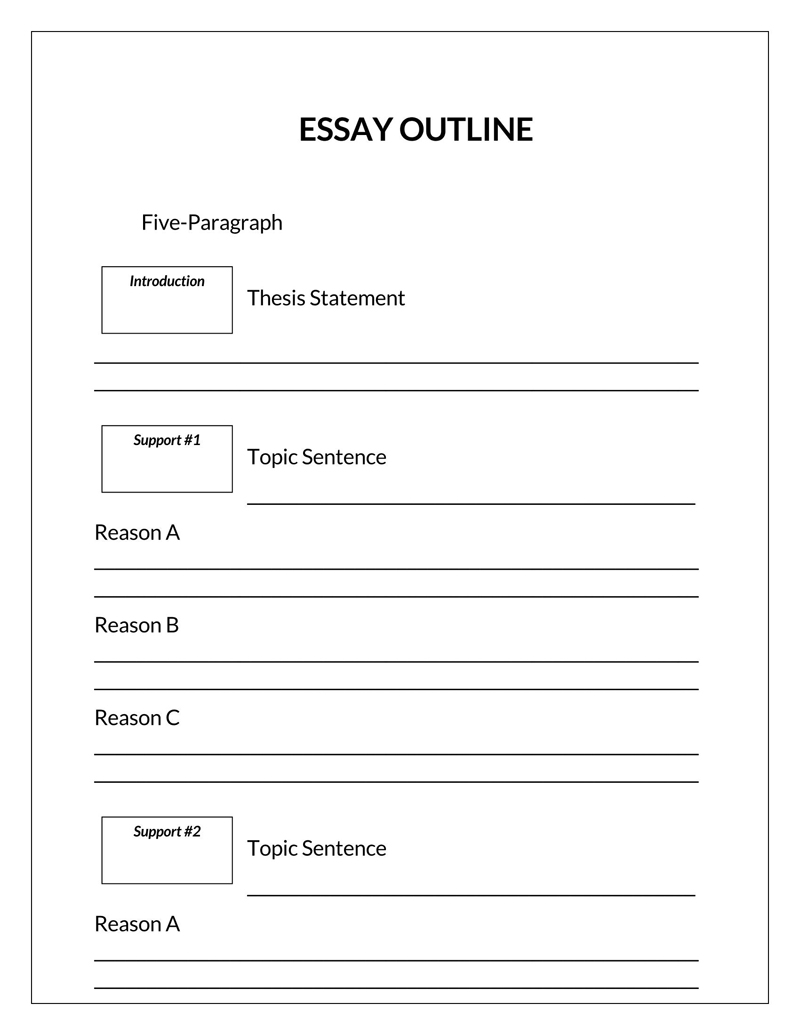
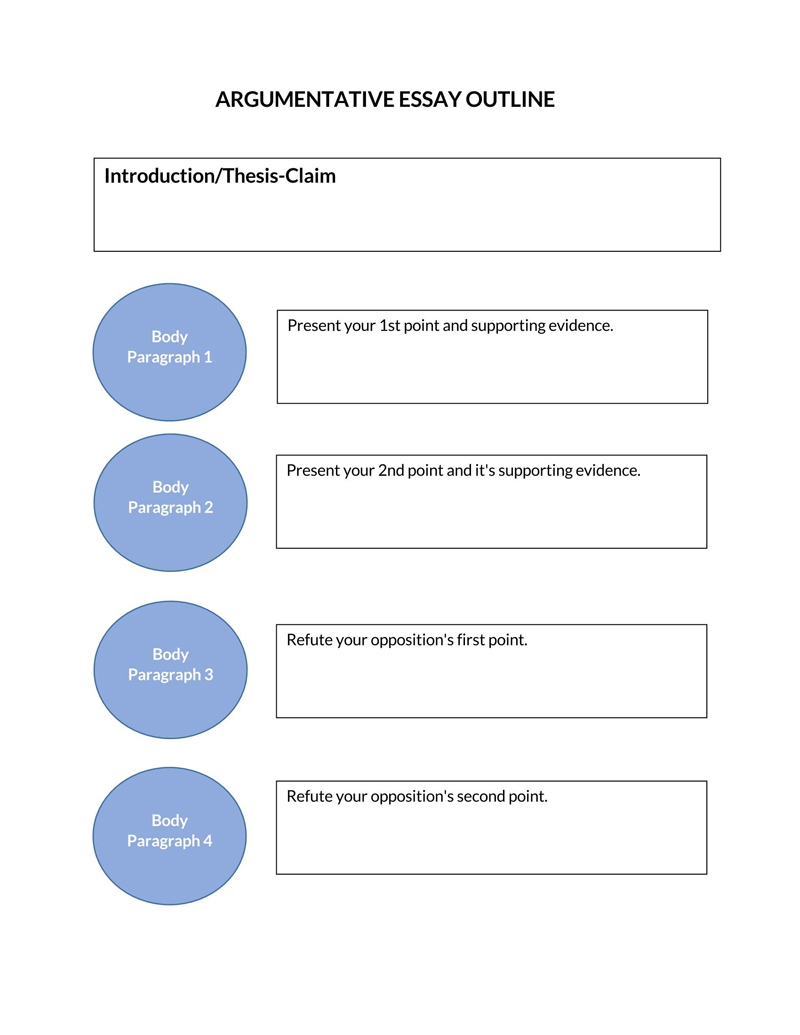
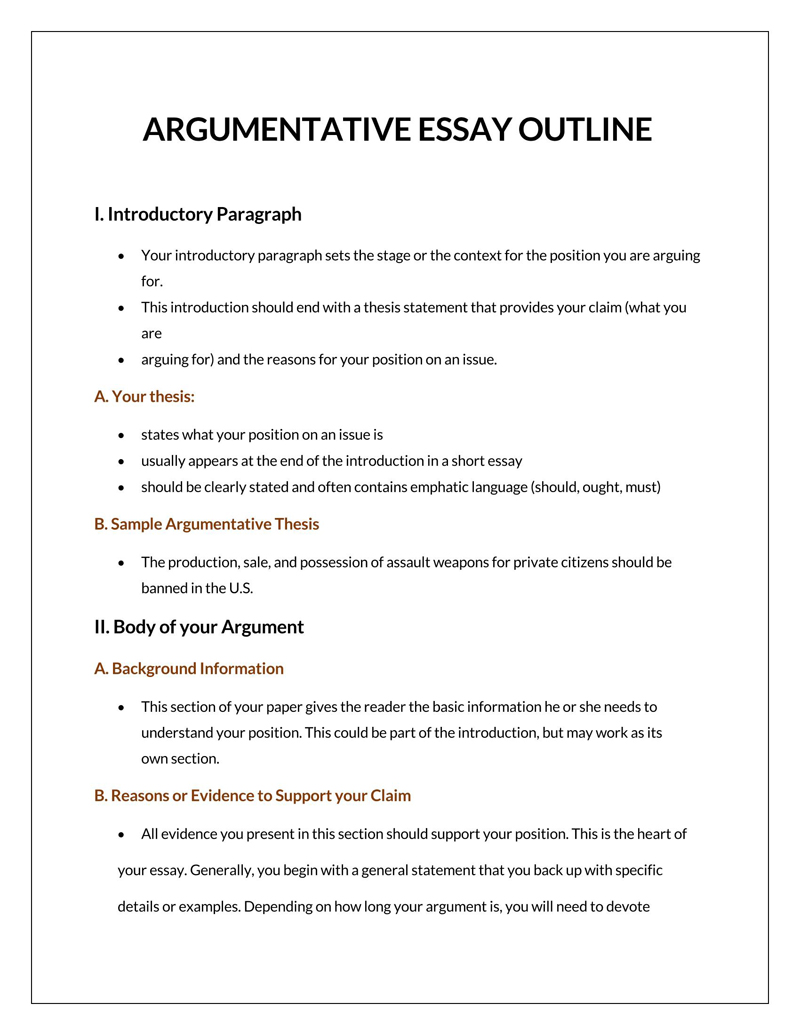
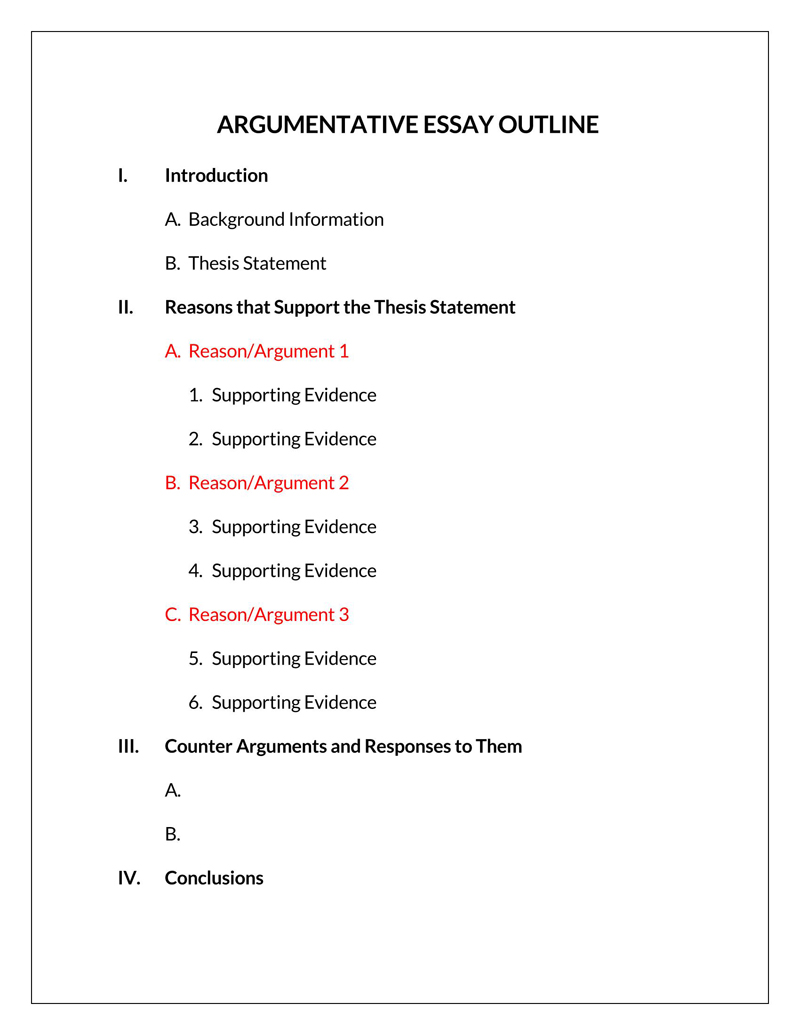
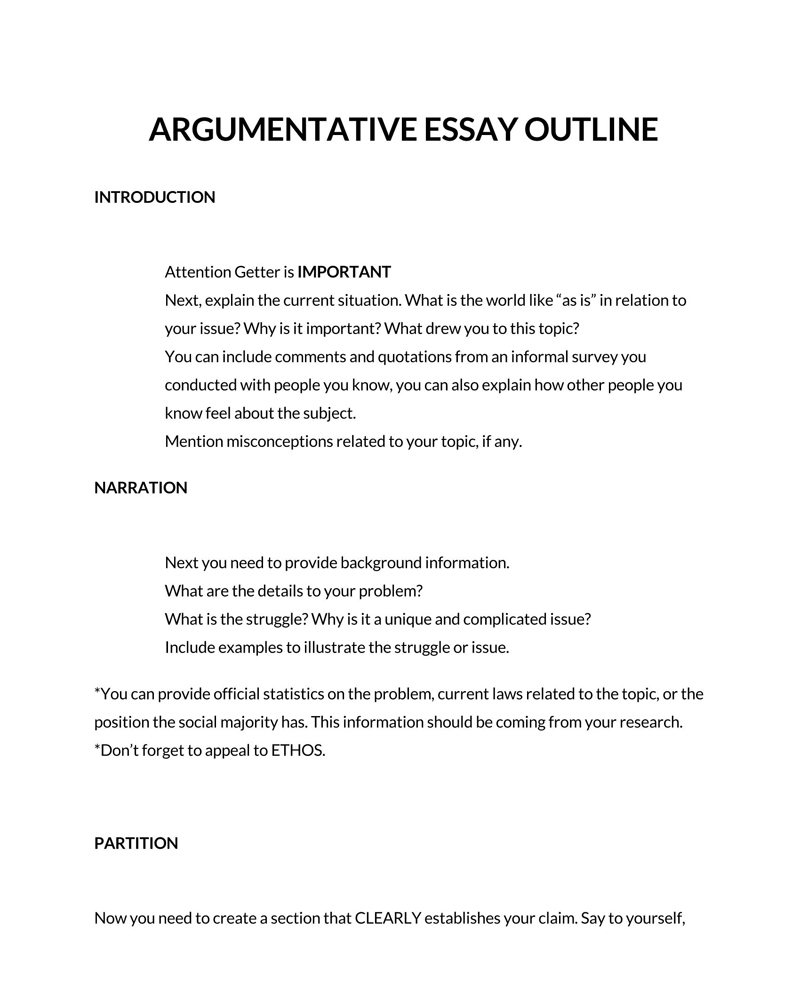

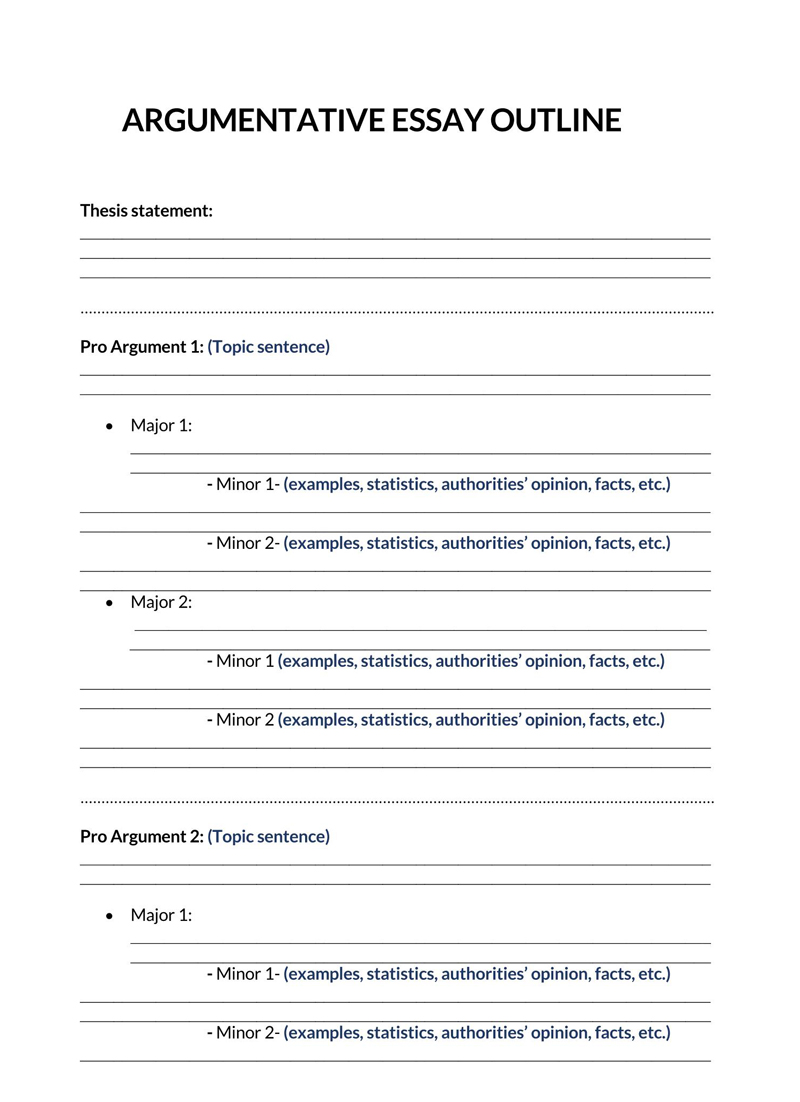
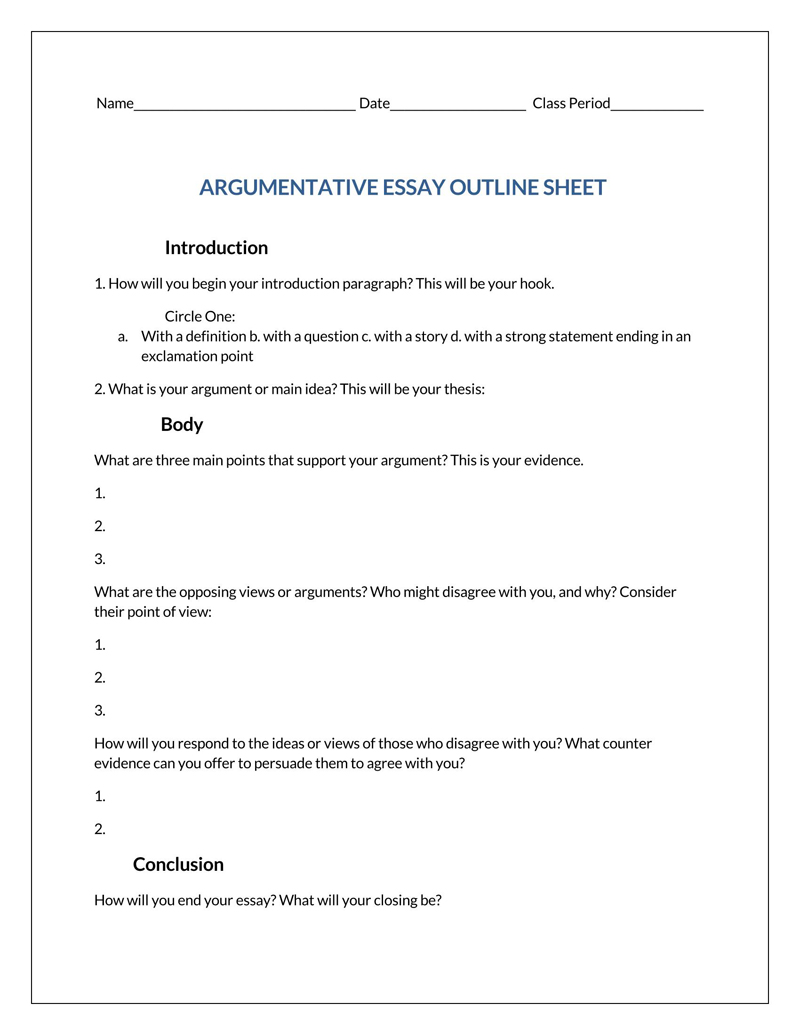
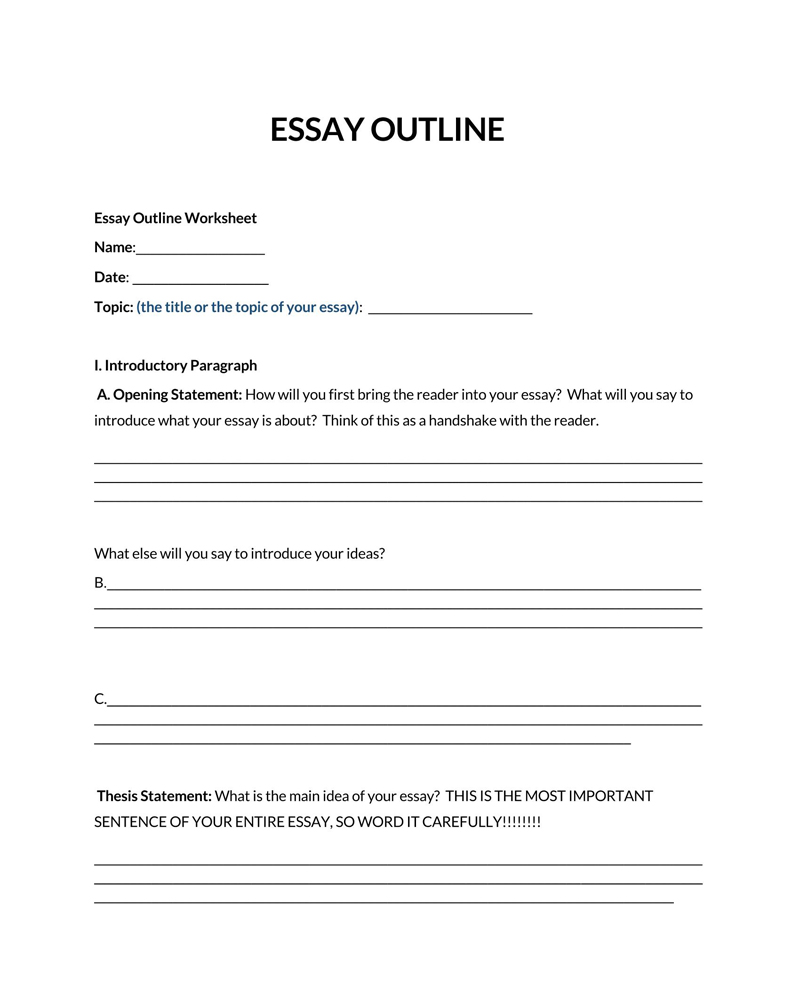
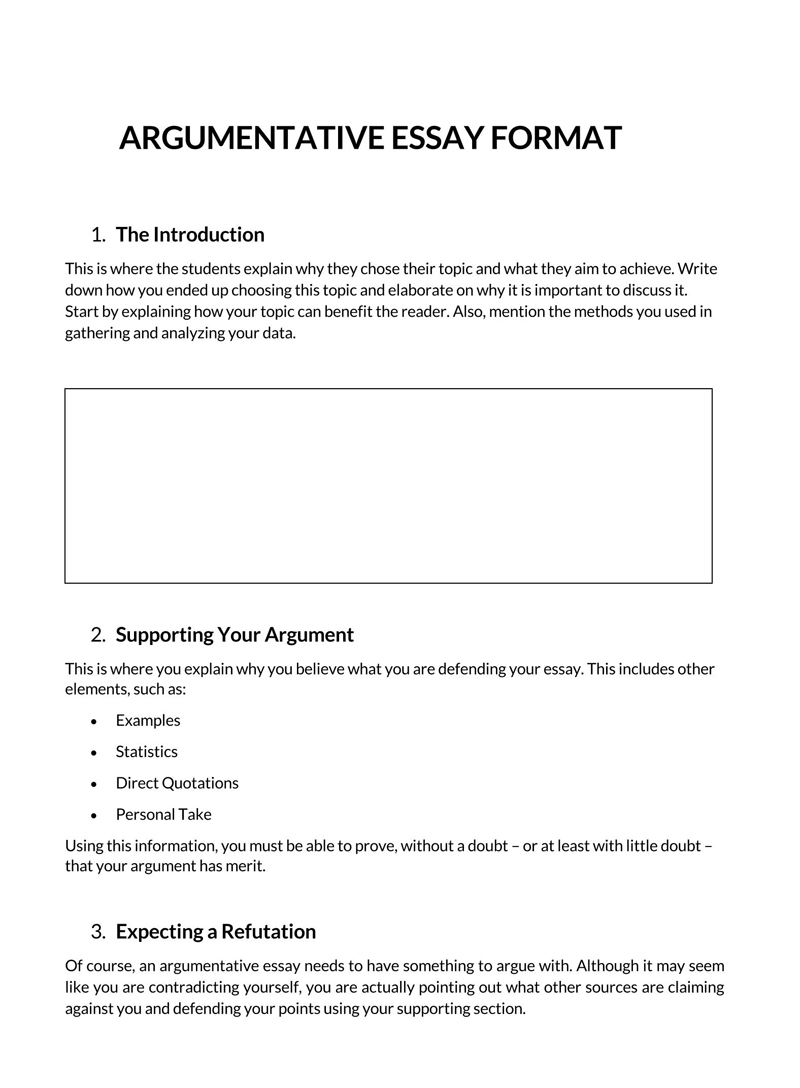
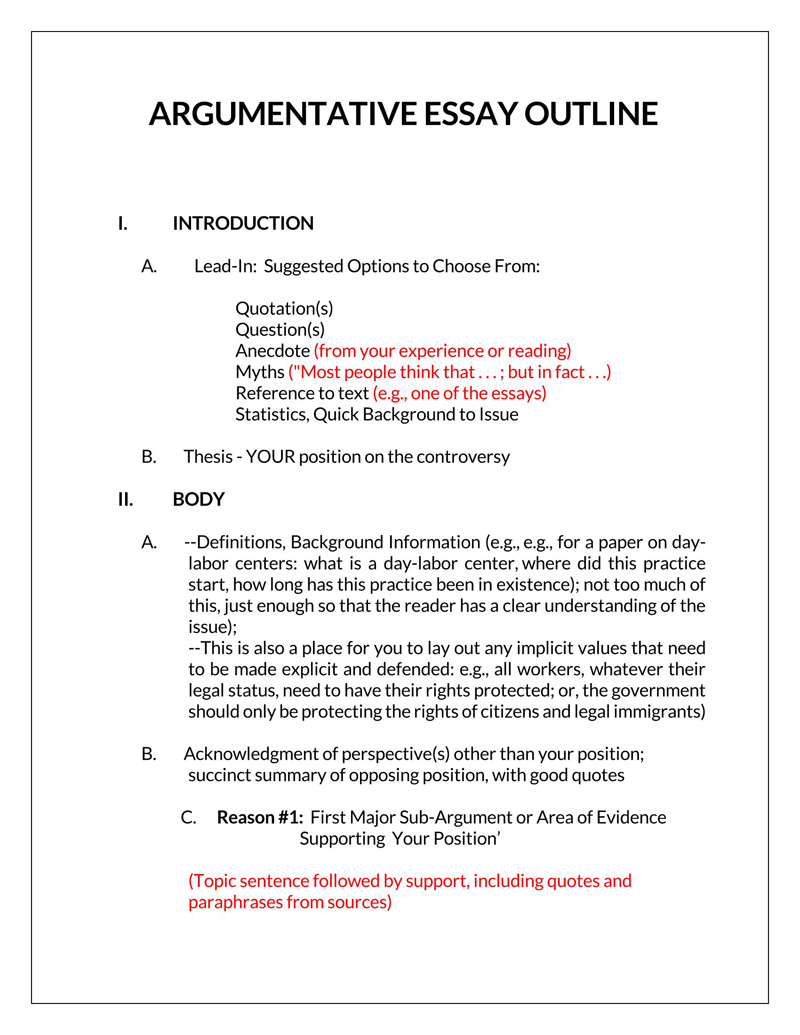
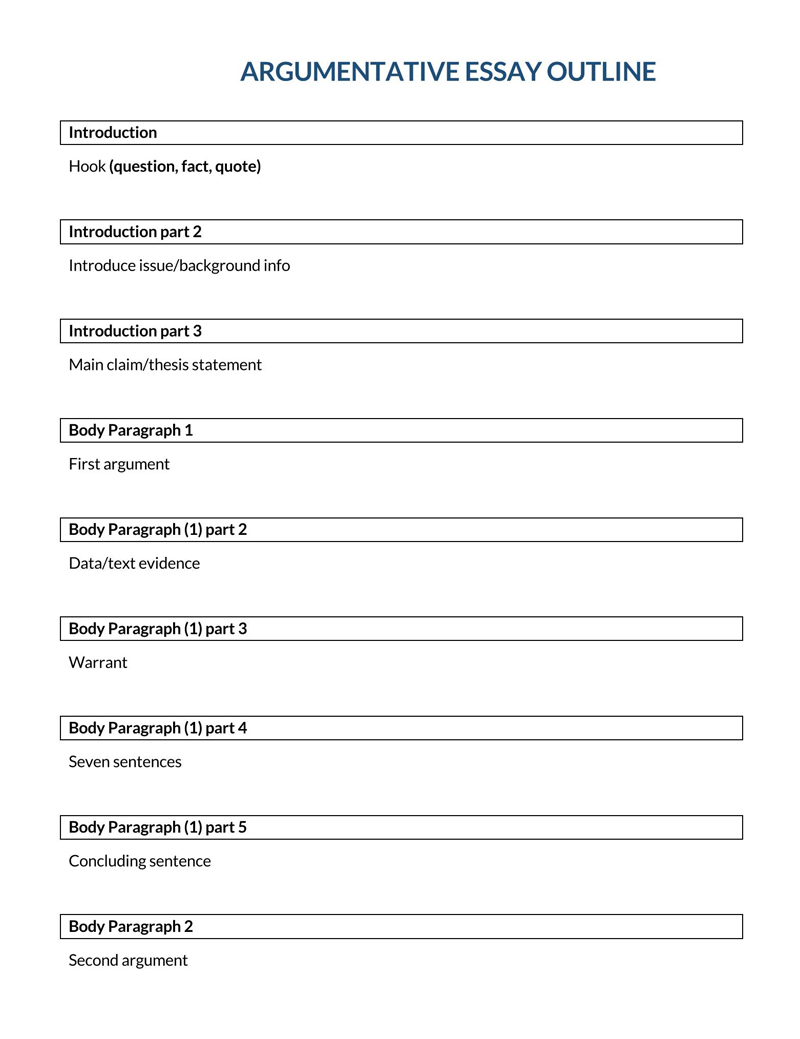
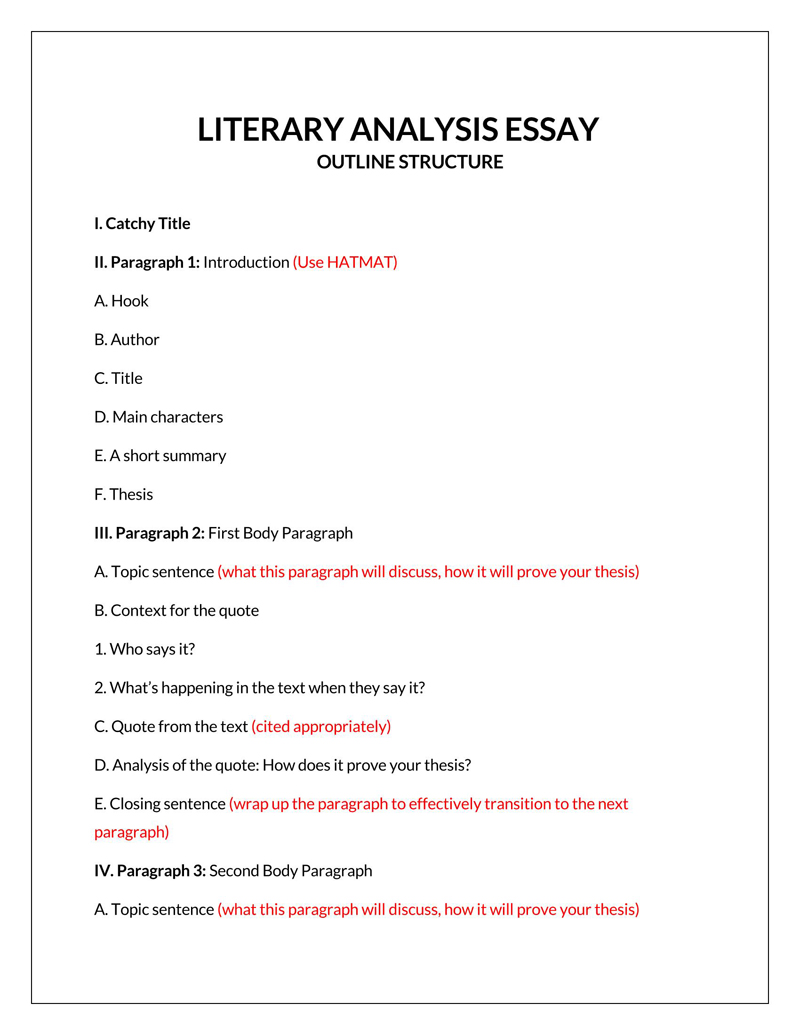
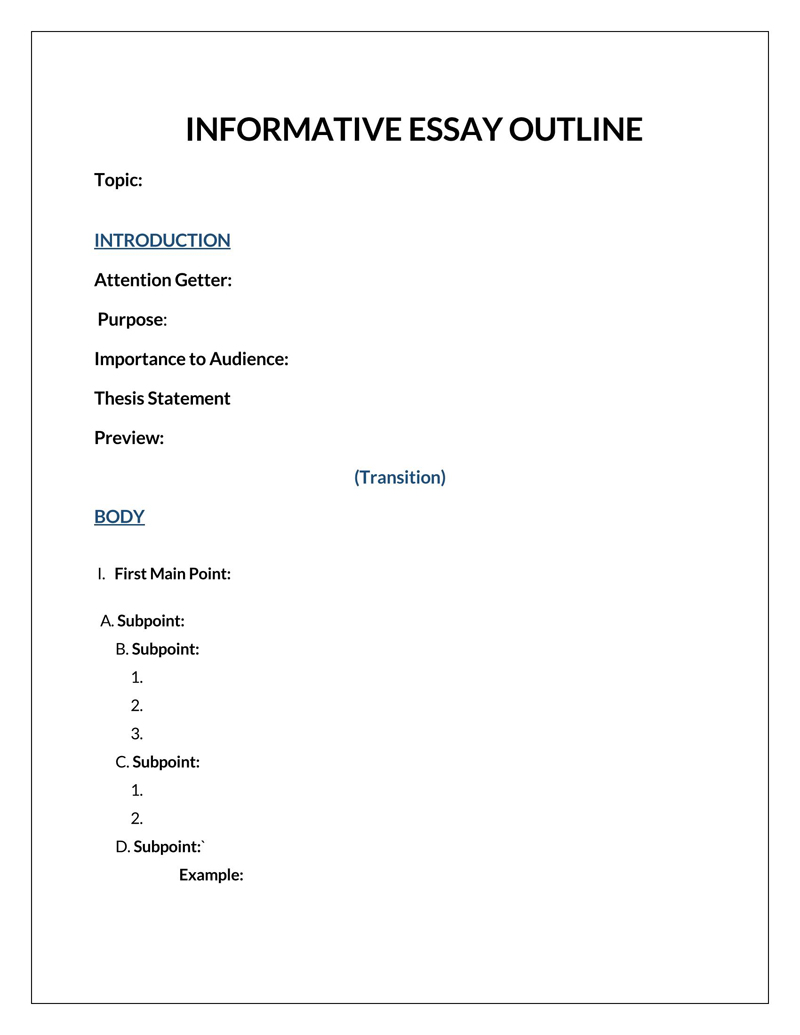
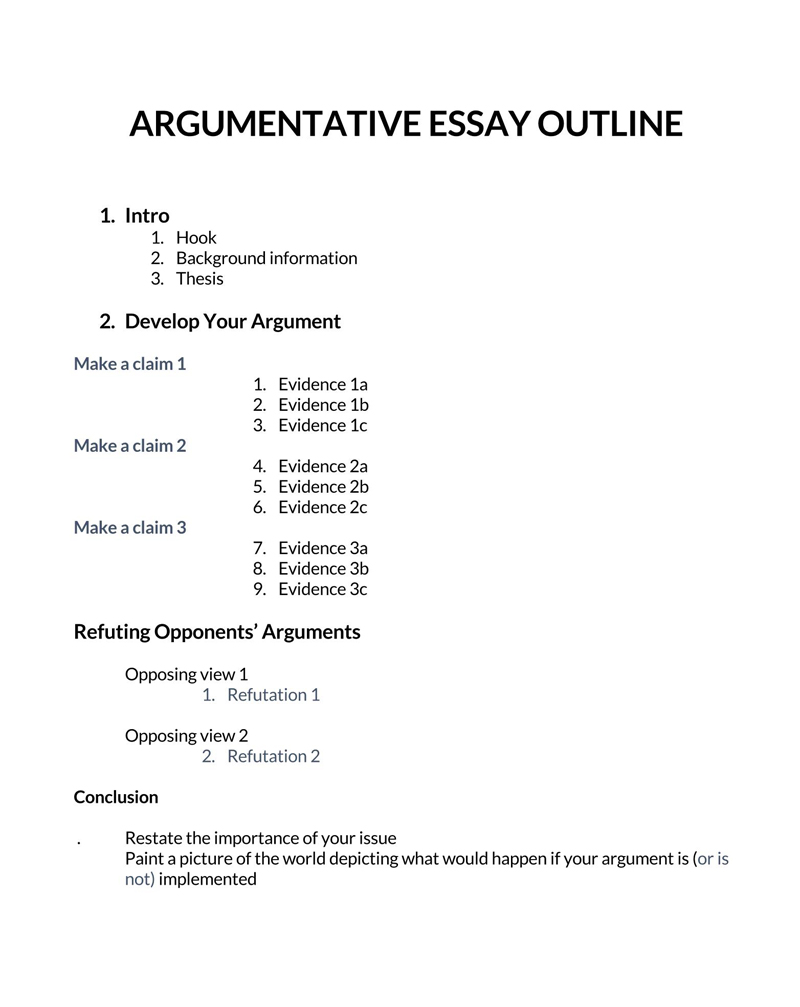
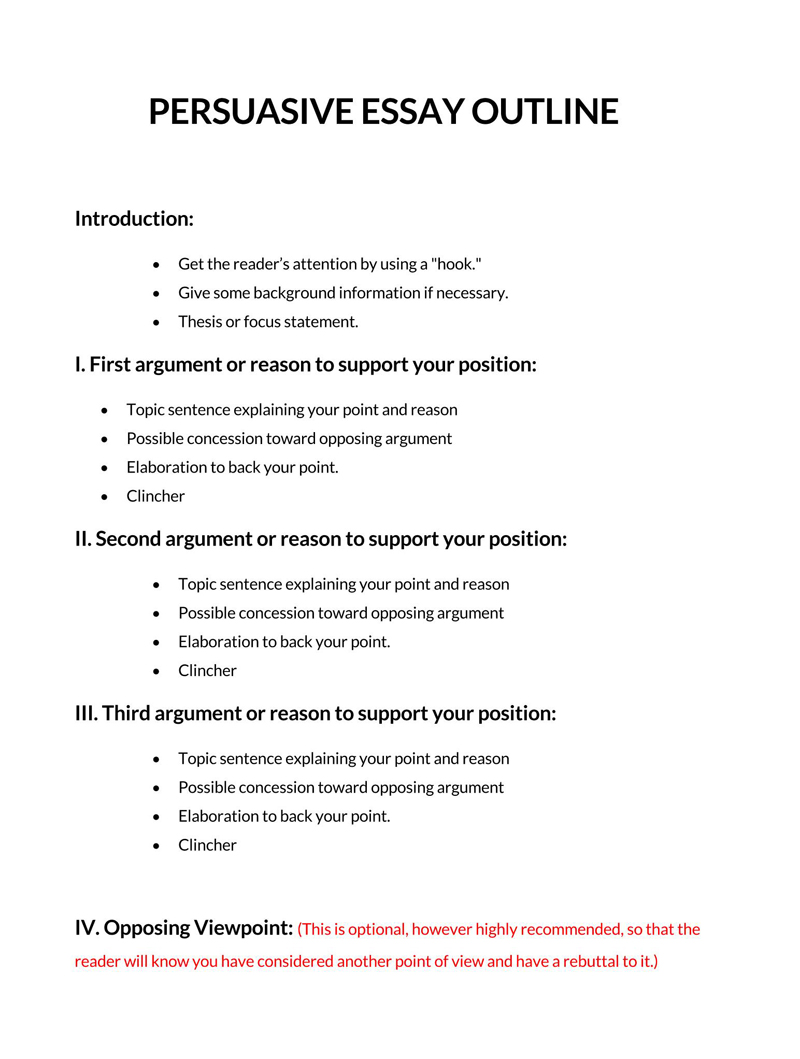
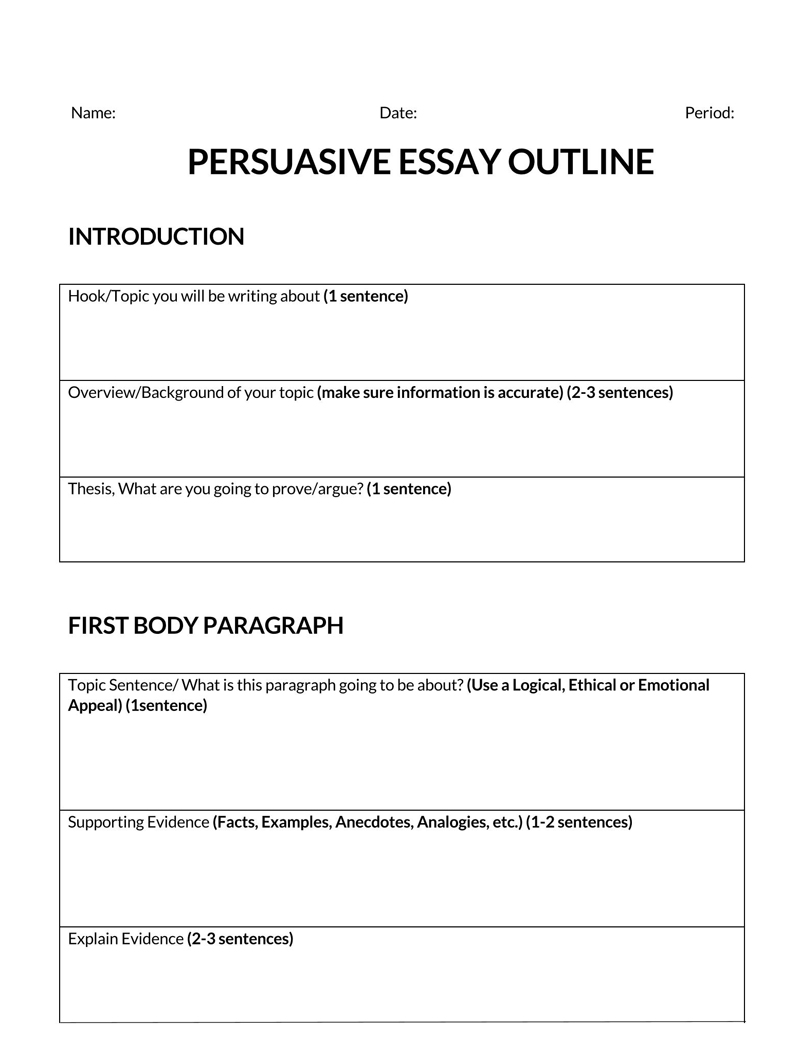
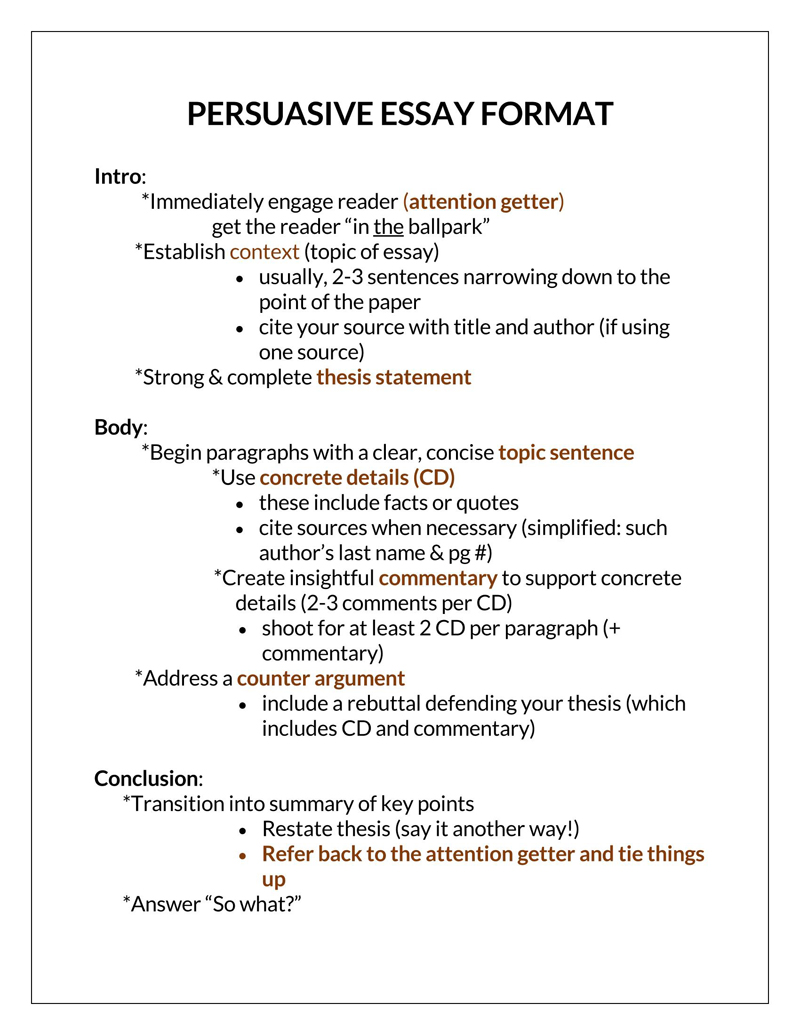
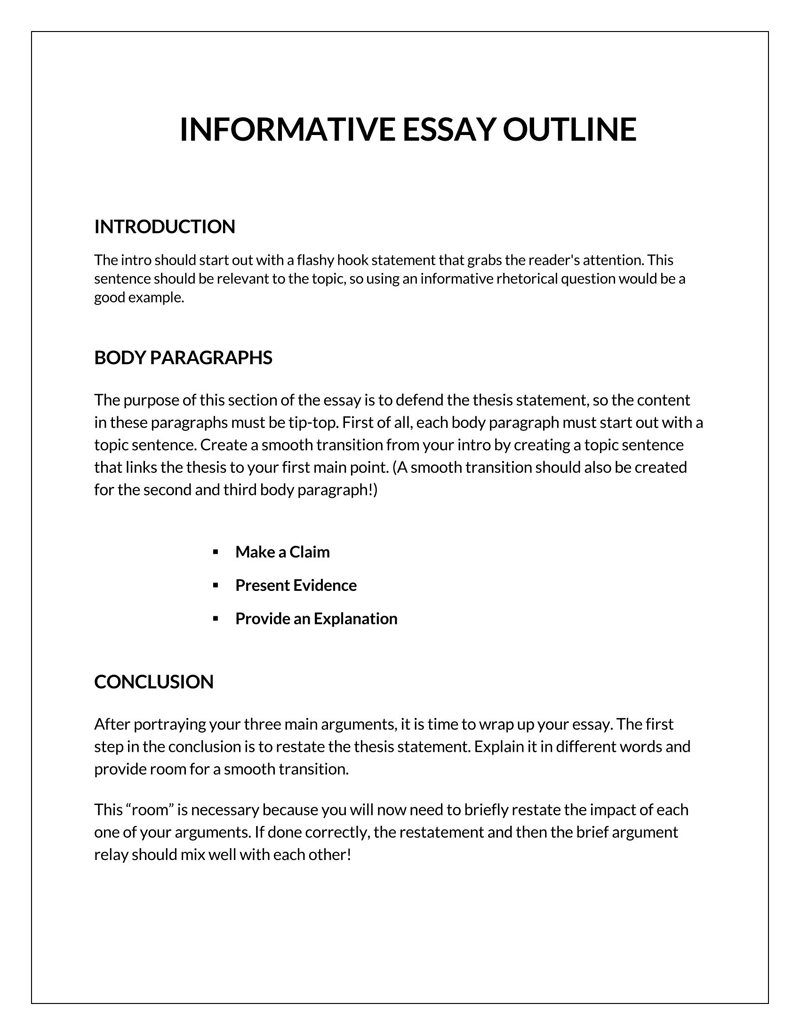
Pre-Writing Considerations
Before jumping into drafting your first outline, there are some key ideas you should keep in mind first. A strong outline is all about appropriate planning and structure, so before putting pen to paper, here are some pre-considerations:
Read your assignment
The very first step is clear, that is read the assignment carefully. A big step in the writing process is making sure that you’re writing something with purpose, and, in this case, the purpose may be to follow instructions. For example, if you need to make a persuasive essay, the structure will differ from that of a research essay.
Reading the assignment first will ensure that you’re on the right track and understand what the final product should look like.
Answer the question
After reading the assignment, you should make sure you have a clear answer to the question. Your thesis statement should be the main argument for your essay and answer whatever question has been presented.
For example, when writing a persuasive essay about raising the minimum wage, your outline should clearly state your stance. By taking a brief look at your outline, a reader should understand the answer to the prompt and the main arguments you’ll be using to support your opinion.
Identify the audience
The following critical step to appropriate essay writing is to identify the audience. Of course, the style and tone of your writing will be very different depending on who your target reader is. For example, if your audience will be your peers, you may use a more casual tone than if your target reader is an academic expert.
By identifying the audience, you’ll make sure that your word choice is practical, your register is appropriate, and your argument resonates with the reader.
Organize your material
The next step is to collect your arguments and organize them coherently to create an outline. You may have already formed your ideas, but it’s okay if you haven’t created a strongly worded-argument yet. So here, the goal is to organize your thoughts and your sources so that you can refer back to them when you’re writing:
Create categories
You should go back through all the research and ideas you’ve considered and separate them into different categories in the outline. In a persuasive essay, the different categories may be the separate points to your argument and the information that backs them up.
All of these different categories should be able to be connected back to your thesis statement since it’s the main idea. Depending on the essay’s length, you could have two or three principal arguments connecting to your thesis statement. Typically, you would want a minimum of one paragraph dedicated to each point.
Afterward, once you have all of these points written down on your outline, take a moment to step back. Ask yourself if everything flows correctly or if there is any repetition. Likewise, make sure that all key arguments you want are represented in this structure.
Order of information
Once you have all the categories presented in the outline, you’ll want to work on the flow of the essay. While you should always have a clear introduction and conclusion, the body can come in different forms.
The best way to do this is by considering how the different categories connect in the outline. If point A leads into point B naturally, then point A should come first. If there is a clear starting point to your essay, you should begin there. It would be best if you typically considered starting with your strongest argument to entice the reader and keep them interested.
State your thesis
Finally, you’ll want to craft your thesis statement once the outline structure is determined. This statement will be exactly what appears in your essay, and so, it should be robust and well thought out.
The thesis statement should state your main argument and the different points you will make in your essay. In short, your thesis statement should be a highly condensed version of the entire paper.
How to Structure an Outline?
While every essay will be slightly different, a generalized template can be followed when starting. For example, consistent with the concepts mentioned above, the following example could be a potential outline for a persuasive essay on the controversial topic of raising the minimum wage.:
- Introduction: Minimum wage and how it affects the population.
- Hook: People working full-time cannot afford to live a luxurious life.
- Background: Low wages affect people’s lives by impeding their ability to grow wealth, take care of their basic needs, and enjoy a dignified lifestyle.
- Thesis statement: “Increasing the minimum wage would positively impact society as it has not kept up with inflation over the years. It would reduce poverty and result in a stronger economy.”
- Body: Three main arguments for increasing minimum wage:
- Topic 1: The minimum wage has remained lower over the years and has not increased proportionally with the cost of living.
- Topic 2: Increasing minimum wage would help reduce poverty by allowing people to pay for their basic needs and have money to save.
- Topic 3: As more people would have money to spend on goods and services besides basic amenities, the economy would improve.
- Conclusion: Increasing the minimum wage would be largely beneficial for the entire population by allowing them to cover their basic needs, grow their wealth, and spend money at local businesses.
- Summary: The current minimum wage is insufficient as the cost of living far exceeds a full-time worker’s financial capabilities. It should be raised in order to meet the basic needs of the population.
- Importance of topic: The purpose of a minimum wage is to guarantee everyone’s right to have their basic needs fulfilled, therefore the minimum wage should be at a level where it reflects that.
- Strong closing statement: The current minimum wage does not meet its own requirements by definition, therefore raising it is the only option.
Each section has been discussed below to understand the above example outline better:
Introduction
The introduction will address the topic at hand. As a writer, it is your chance to entice the reader and have them interested in what they are about to read. The introduction of outline will comprise a hook, the background, and the thesis statement. Therefore, the introduction should be as catchy as possible and specifically aimed at your target reader.
Hook
The hook will be the first statement of the introduction and should be something that catches the reader’s attention. This can often come in the form of a statistic or an otherwise powerful statement.
Background
After the hook, the writer should give some background information to the problem at hand. In this case, the writer can explain the current low minimum wage problem and how it poorly affects the population. This type of argument in the background information will further strengthen the author’s argument.
Thesis statement
Traditionally, the last sentence of the introduction will be the thesis. Doing so makes it incredibly clear to the reader what will be included in the rest of the essay. This way, the reader is prepared for what comes ahead and knows exactly what the author will argue. This allows for a clear and coherent argument at the core of every effective essay.
Body
The body comprises the main arguments that support your thesis statement. In this example outline, three different points were given to connect to the thesis and persuade the reader to take the author’s stance.
A minimum of one paragraph should be dedicated to each of the three body topics. Depending on the desired length, this could be increased. Regardless, the three ideas should be independent of one another but should still naturally flow from one idea to the next. This allows for coherency and improved essay structure and can be done through transition sentences.
Conclusion
Within the conclusion, you should be able to summarize everything that has been said up to this point and restate your main argument firmly.
Summary
The start of conclusion will summarize three-body topics as indicated in the example outline above. This allows the reader to understand that the essay is coming to a natural conclusion and improves the fluidity of reading.
Importance of topic
In parallel with the introduction, it is often advisable to restate the importance of the topic at hand. In this case, to restate how low wages negatively affect the population. Depending on your audience, this could be done through pure statistics or a more emotionally-based point.
Strong closing statement
Finally, a powerful statement that ends the essay should be placed at the end of the outline. It should restate the importance of the thesis statement and persuasively mention your argument.
Outline Format
Depending on the type of essay you’re writing and your personal preference, there are a variety of outline formats you can use.
Here are just a couple:
Alphanumeric format of outline
This is by far the most common of the formats. It allows for a clear representation of each topic you’ll be discussing within your essay. This type of outline will use numbers to represent the main sections, while the subsections will be represented by letters, or vice-versa.
Decimal format of an outline
A decimal format is another standard outline structure. Ultimately, it is pretty similar to the alphanumeric format, but some people prefer this style as it may seem more evident. Both are perfectly acceptable as long as you use them to give your essay structure.
Following are a few more outlines for your ease:
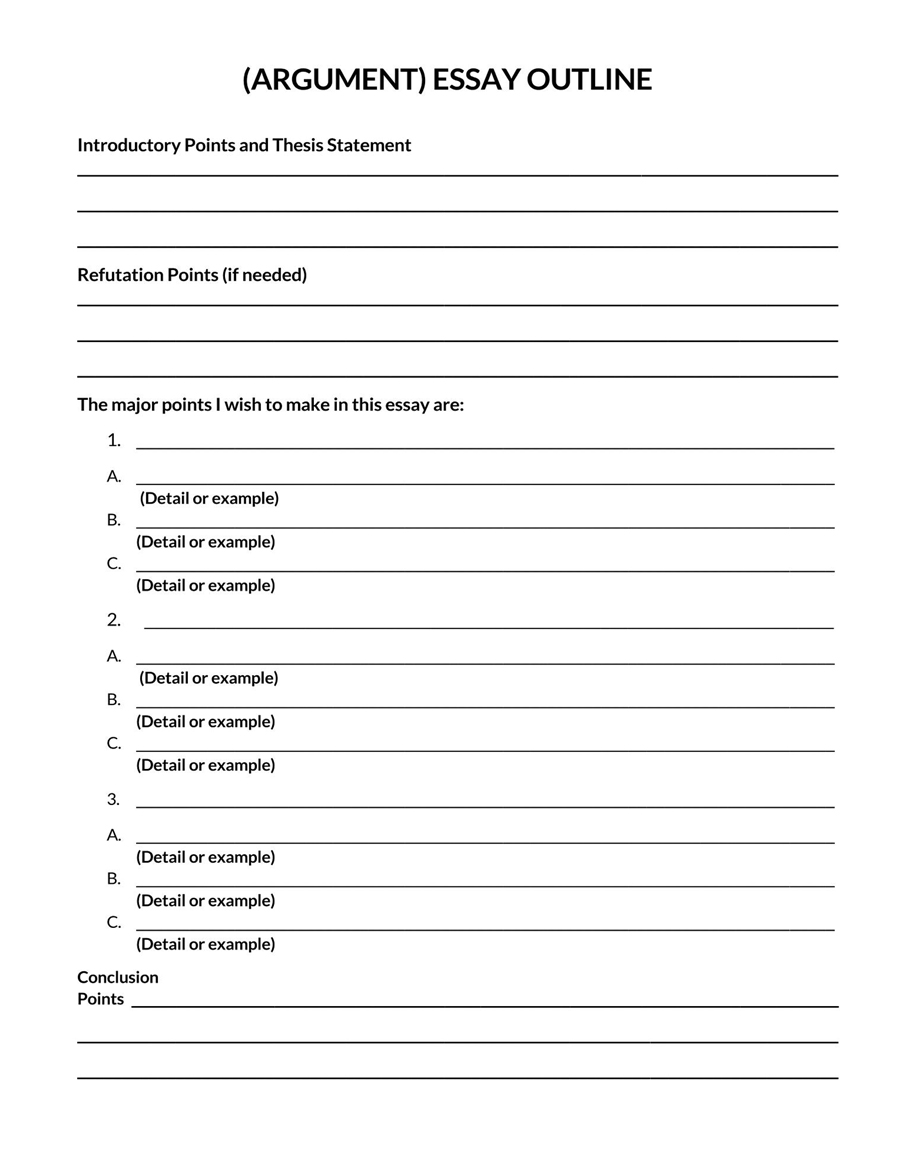
Argumentative Essay Outline Sample
Download: Microsoft Word (.docx)
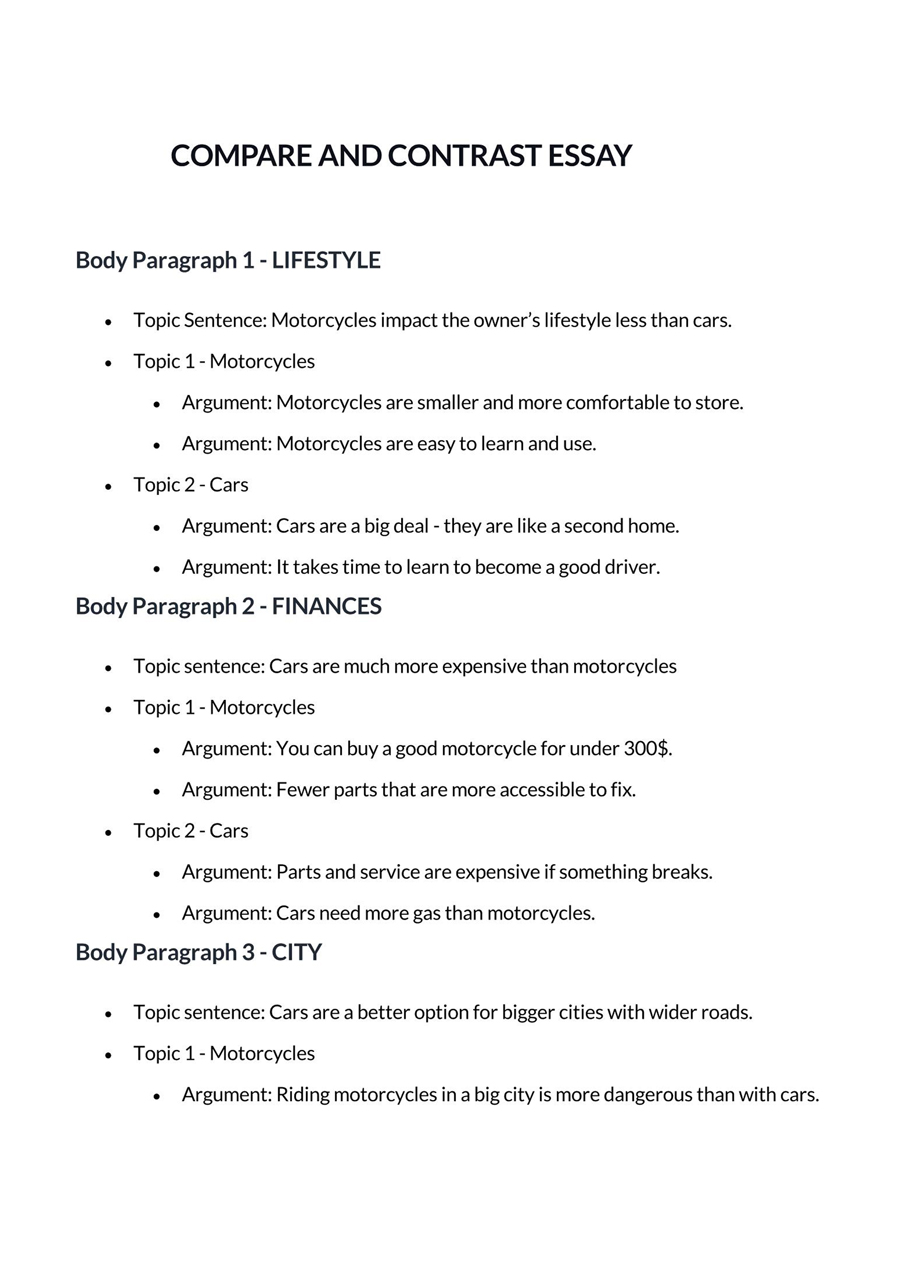
Compare and Contrast Essay Outline Sample
Download: Microsoft Word (.docx)
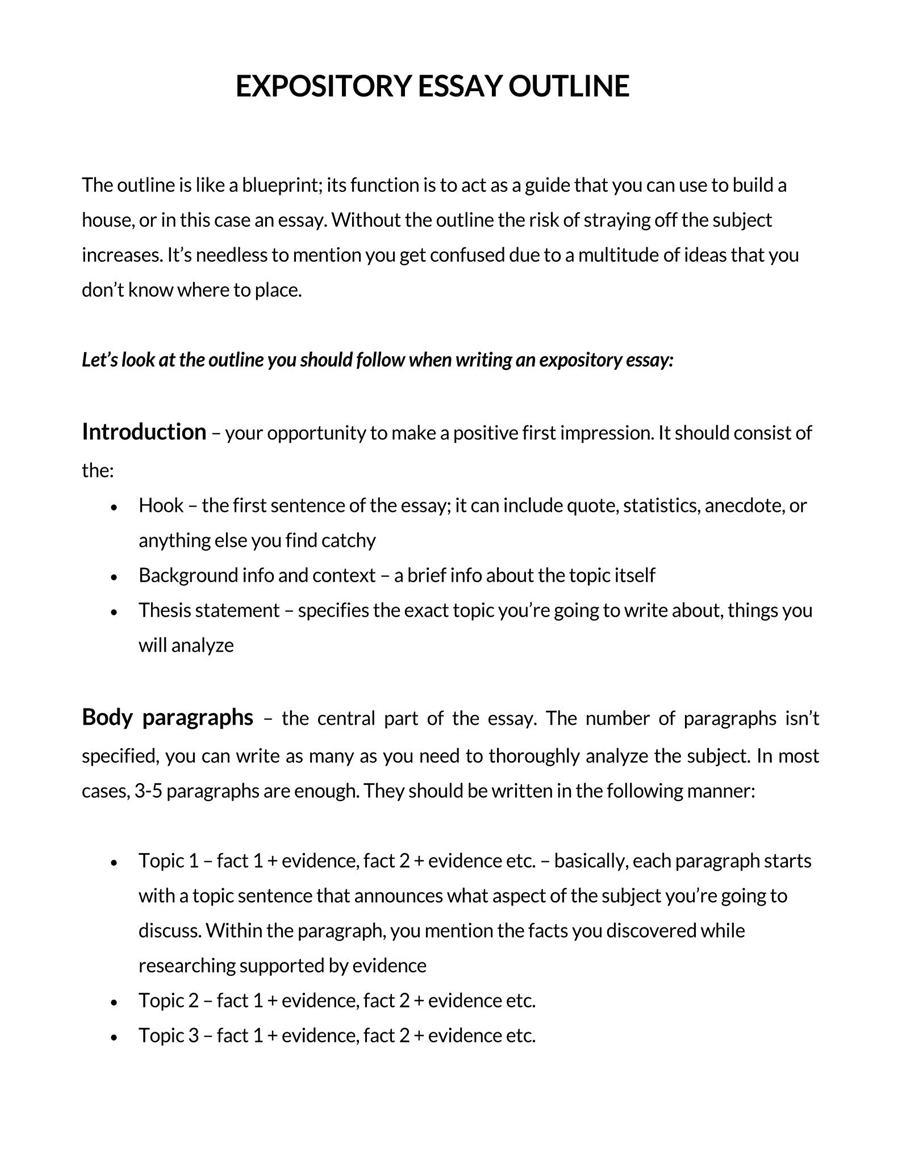
Expository Essay Outline Sample
Download: Microsoft Word (.docx)
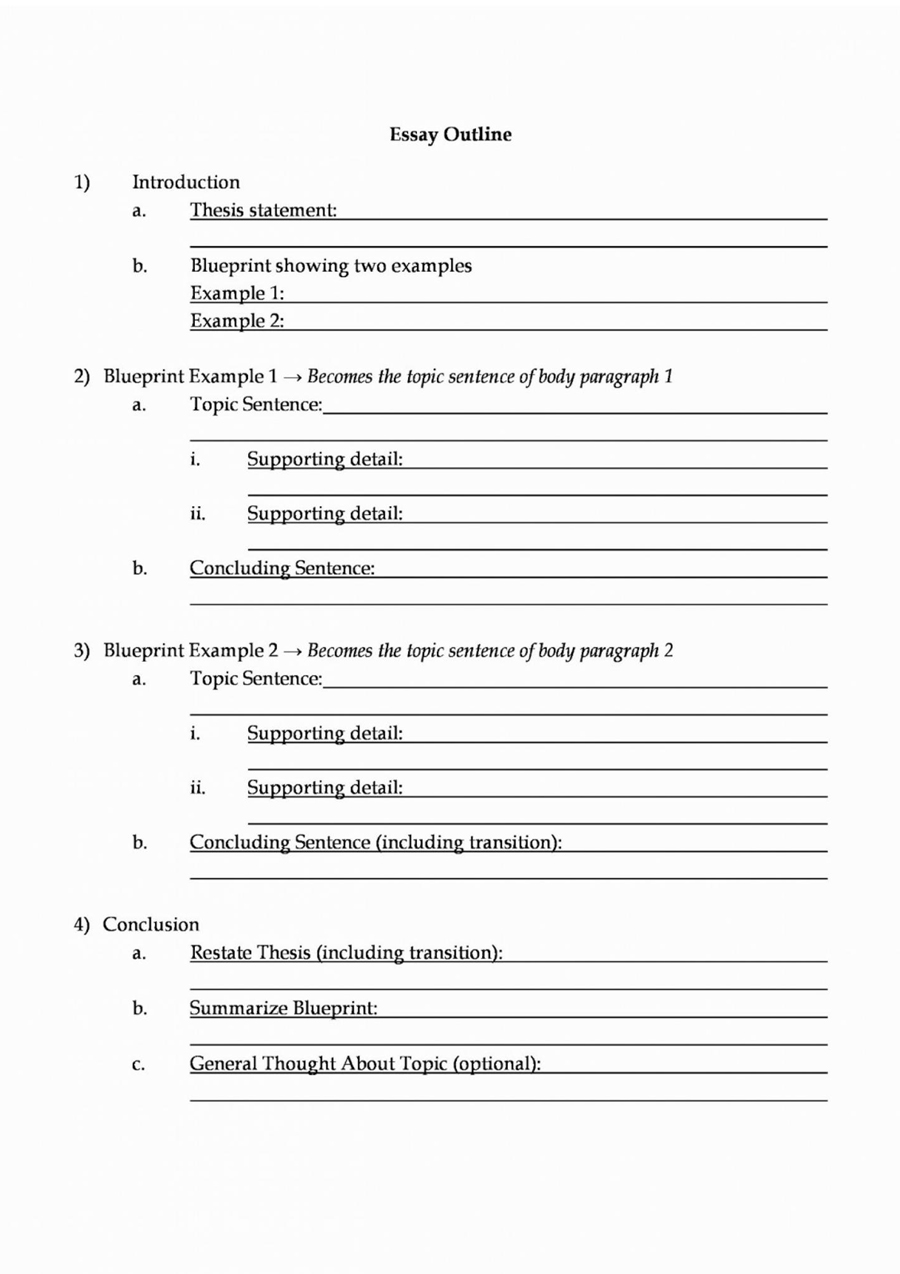
Reflective Essay Outline Sample
Download: Microsoft Word (.docx)
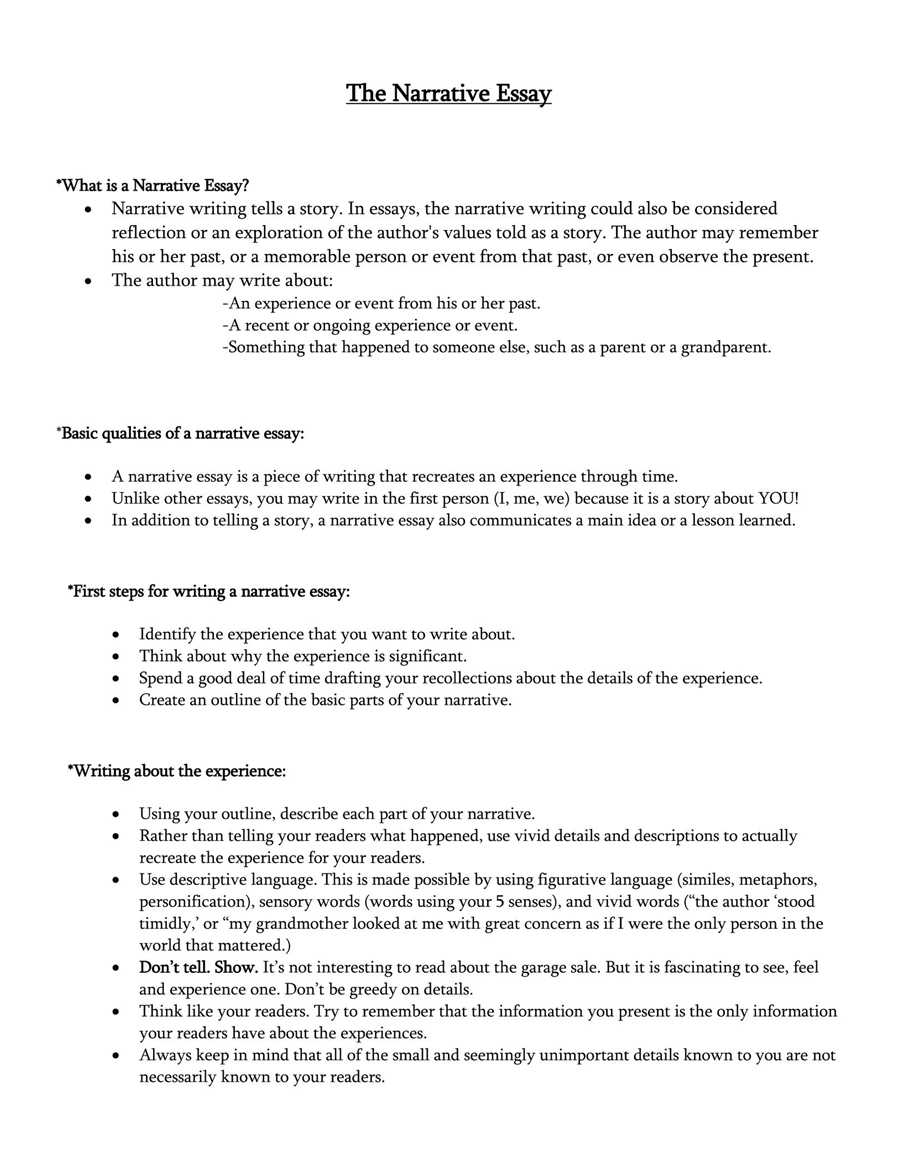
Narrative Essay Outline Sample
Download: Microsoft Word (.docx)
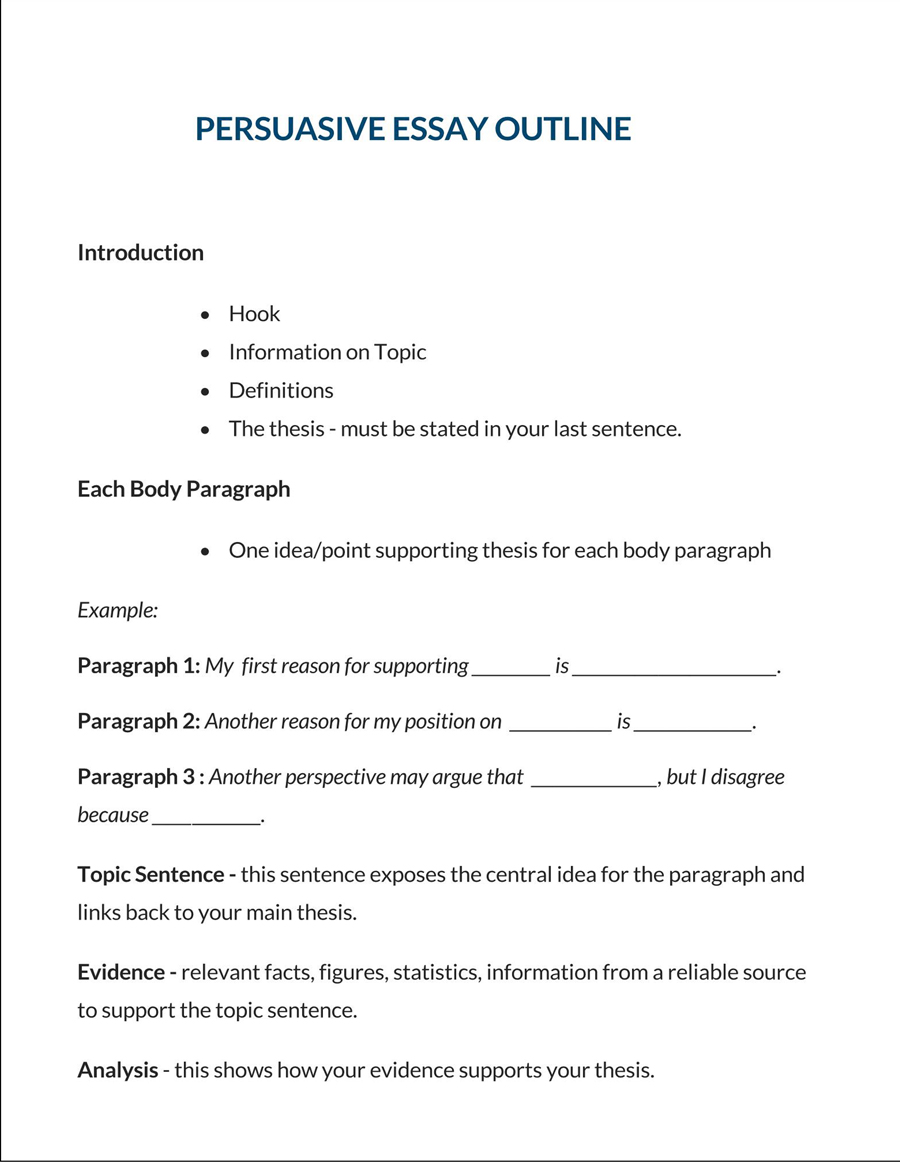
Persuasive Essay Outline Sample
Download: Microsoft Word (.docx)
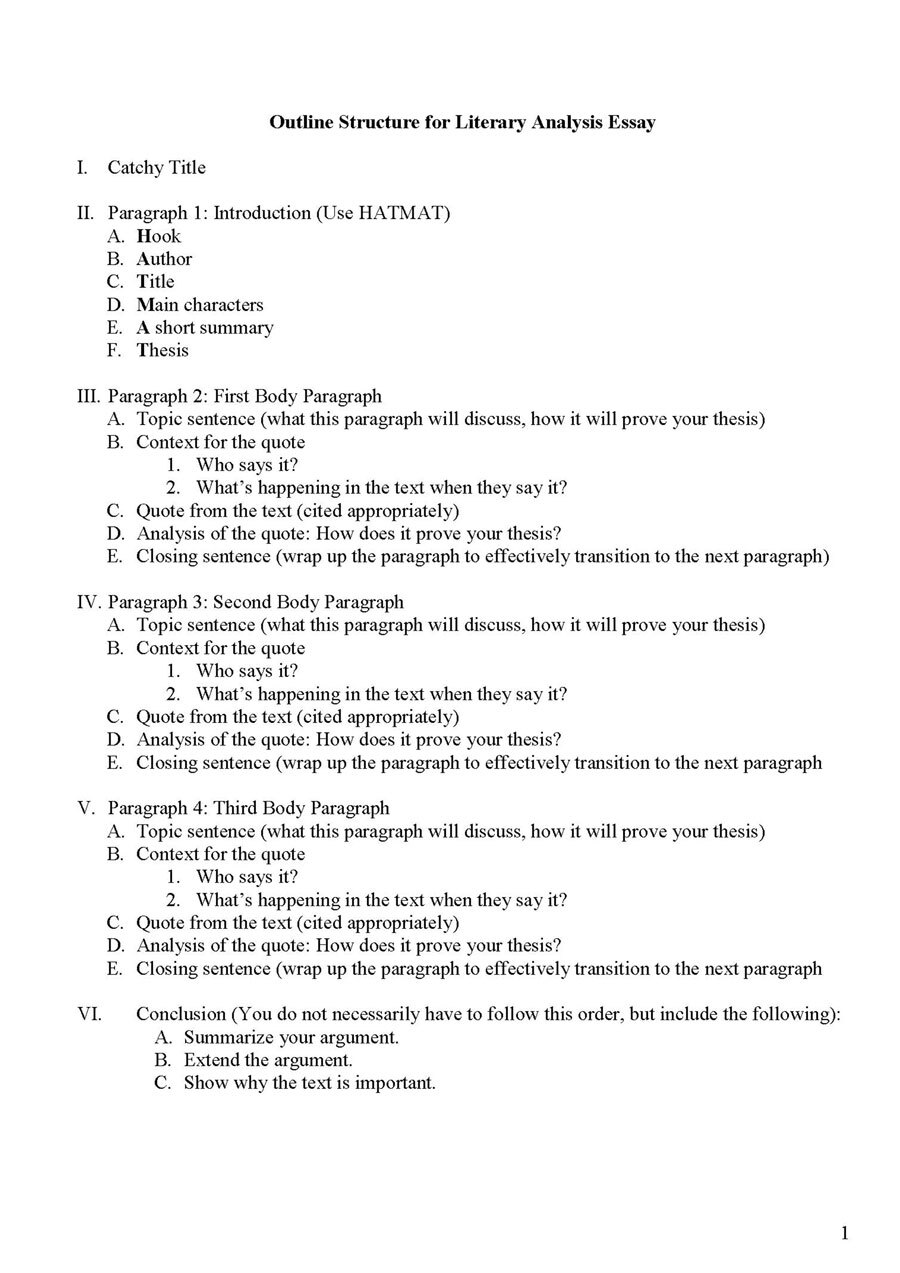
Literary Analysis Essay Outline Sample
Download: Microsoft Word (.docx)
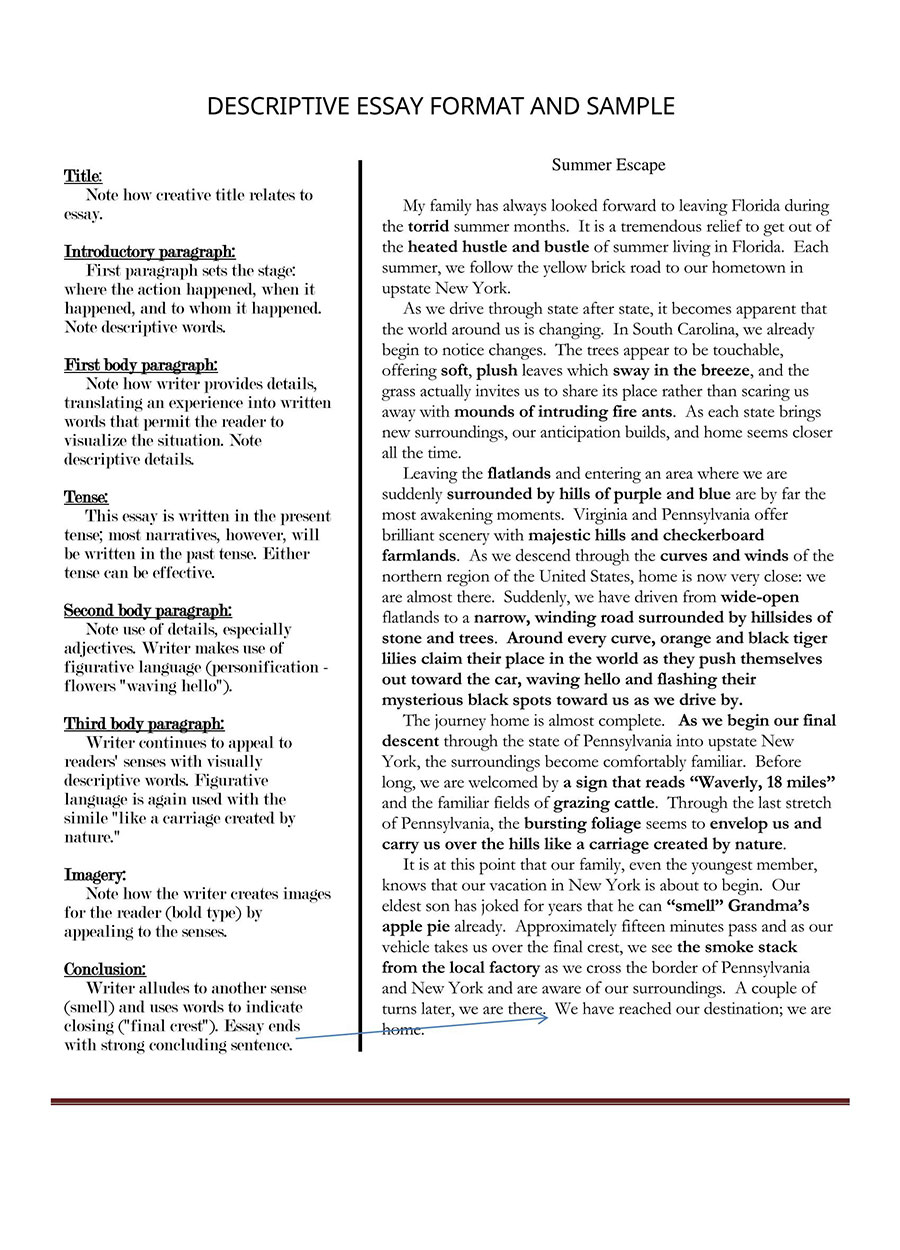
Descriptive Essay Outline Sample
Download: Microsoft Word (.docx)
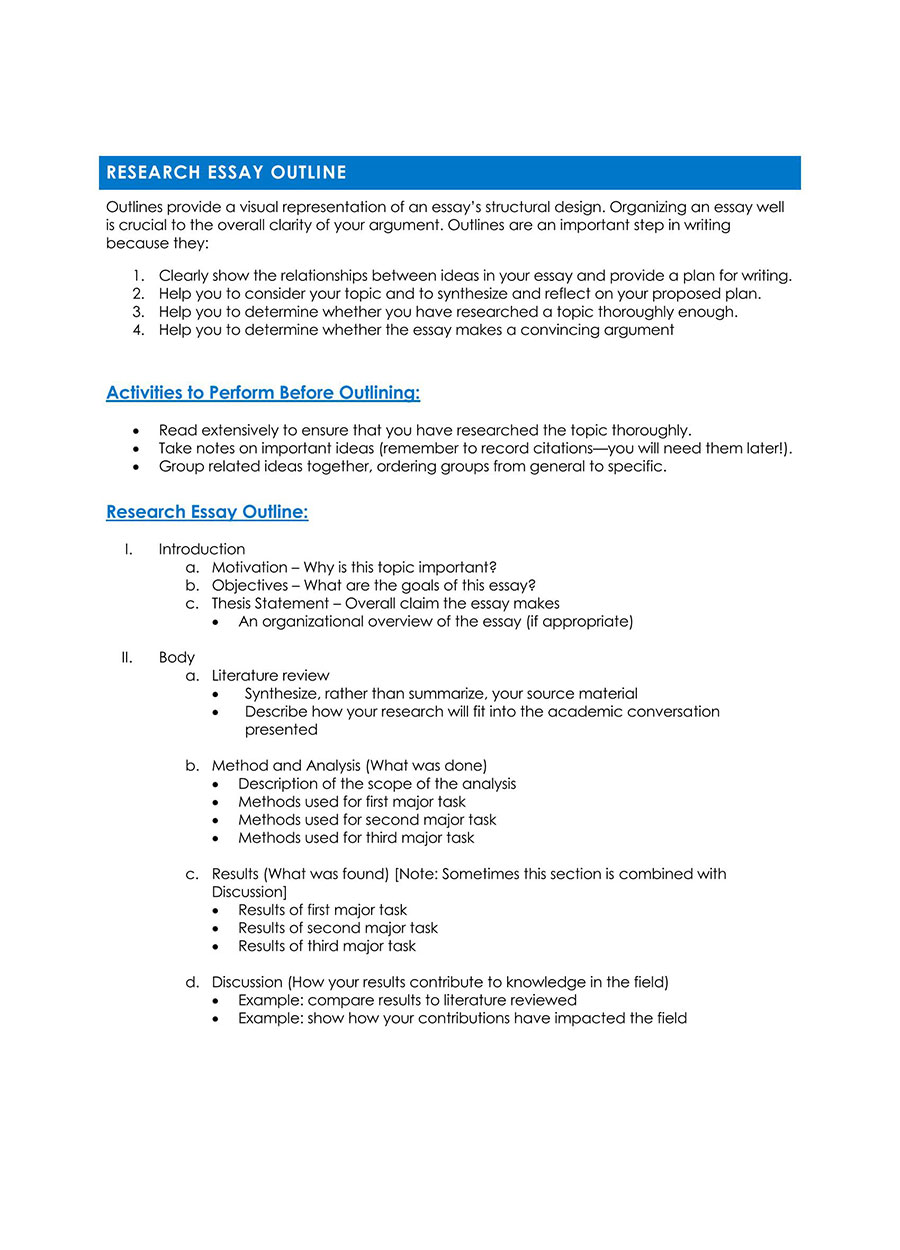
Research Essay Outline Sample
Download: Microsoft Word (.docx)
Frequently Asked Questions
You should start writing your outline before beginning to write your essay. In fact, your professor may even ask to see the outline earlier in an academic environment.
Although, even when it is not required, an outline can be beneficial for you to smooth out the writing process. You can always use a template if you’re lost or don’t know where to start.
Some supervisors have different guidelines that describe whether or not complete sentences are necessary. It won’t be indispensable as long as your ideas are clearly expressed in most cases.
If you’re writing the outline for yourself solely, you can decide. But ultimately, the outline is there to help you during your writing process, so choose whatever you find most comfortable.
Ideally, you should follow your outline as much as possible. But, of course, as you write your essay, you may discover an alternative argument or structure that you find better. If that’s the case, make sure you take the time to consider whether or not it truly is beneficial to the overall essay.
